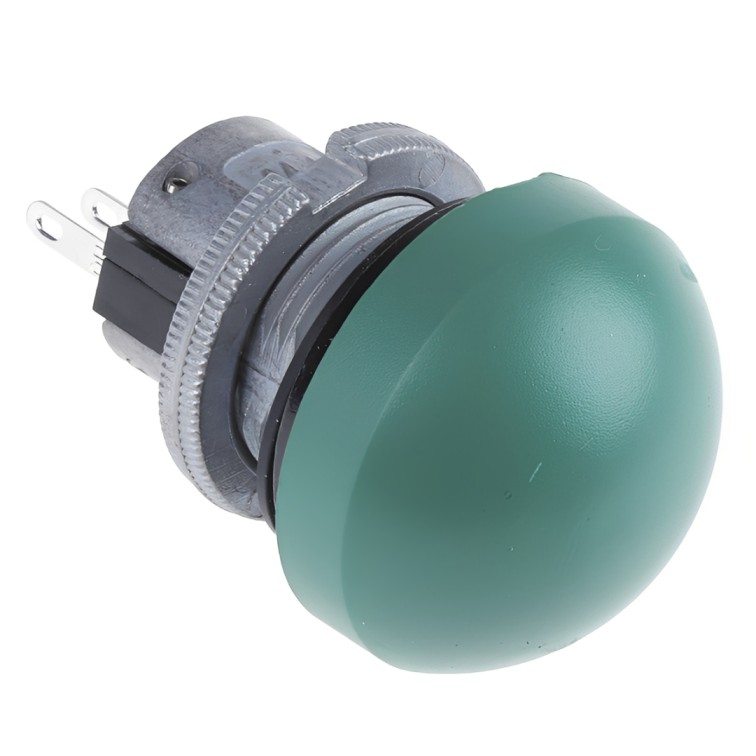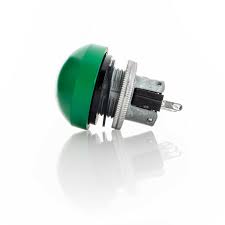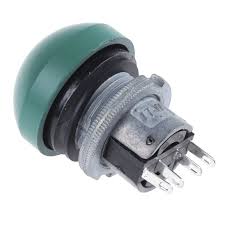
What Is a Momentary Push Button Switch?
A momentary push button switch is a widely used electrical component that operates only while being pressed. It’s designed to close or open a circuit momentarily and then return to its default state when released. These switches are essential across countless electronic systems, from simple DIY circuits to industrial controllers, where temporary electrical activation is needed.
Their brief-contact mechanism makes them ideal for user interfaces, control panels, machinery, and automotive electronics. Whether embedded in laptops, controllers, or safety tools, momentary push buttons deliver fast, intuitive input control without the need for latching mechanisms.
Understanding the Working Mechanism
The functionality of a momentary push button switch revolves around its spring-loaded mechanism. When the button is pressed, the internal contacts close (or open) the circuit to allow (or interrupt) current flow. Once the pressure is removed, the spring mechanism restores it to the original position.
There are two primary types:
- Normally Open (NO): Completes the circuit when pressed. Common in doorbells and machine-start triggers.
- Normally Closed (NC): Breaks the circuit when pressed. Often used in emergency stop functions.
Common Applications in Electronics and Tools
Momentary push button switches are ubiquitous across industries and devices. Here are some common application areas:
Industrial and Machinery Use
- Start and stop buttons for controllers and contactors
- Activation of safety mechanisms
- Control inputs for programmable systems using microcontrollers
Consumer Electronics
- Keypads and power buttons in laptops and microprocessors
- Reset and trigger inputs for LEDs, capacitor circuits, and switches
Automotive Systems
- Horns and ignition start systems
- Dashboard control panels
DIY and Prototyping
- Embedded systems projects using thermal sensors or microcontrollers
- Interfaces for hobby kits, timers, and fuse testing boards
Key Components and Materials
When selecting a momentary push button switch, engineers and professionals look for the following aspects:
Contact Rating
- Defines the voltage and current the switch can safely handle.
- Typically ranges from low-voltage electronics to high-power tools.
Actuator Type
- Flat, raised, or domed for varied tactile responses
- Available with color-coded indicators for quick recognition
Mounting Style
- PCB, panel, or surface mount options
- Snap-in or screw-fit mechanisms for ease of assembly
Terminal Type
- Solder lugs, quick-connects, or connectors for flexible wiring
- Some include pre-wired cables or terminal blocks for integration
Practical Benefits of Momentary Push Button Switches
These switches offer specific operational advantages over latching types:
- Precision Control: Only operates when needed, reducing error risks.
- Compact Size: Ideal for space-constrained electronics and embedded circuits.
- Enhanced Safety: Automatically resets, useful in emergency stop systems.
- Reduced Power Usage: Engaged only during operation, conserving energy in microcontroller systems.
Choosing the Right Momentary Switch for Your Application
Selecting the right switch involves understanding environmental conditions, current demands, and interface requirements. Consider the following:
Environmental Resistance
- Look for IP-rated switches for resistance to thermal changes, dust, and moisture.
- Ideal for outdoor controls, industrial tools, or sensor systems.
Mechanical Durability
- High-cycle life is essential for frequent use in controllers or assembly equipment.
- Stainless steel and durable plastics provide longevity and strength.
Circuit Compatibility
- Ensure proper voltage and load capacity.
- Match switch type with fuses, thermal pads, or LED drivers in the circuit.

Integration With Other Components
Momentary push buttons don’t operate alone. They often integrate with:
- Cables and connectors for electrical continuity
- Controllers and logic circuits for function execution
- Sensors and feedback modules for responsive automation
- Capacitors for debounce control or timed triggers
They’re also used in conjunction with tools like testing kits, calibration instruments, and control panels.
Final Thoughts
A momentary push button switch offers a reliable, precise, and cost-effective method of user interaction in electronic and electrical systems. Whether you’re assembling a prototype or automating an industrial process, this simple yet vital component ensures dependable control with minimal effort.
Its compact design, instant feedback, and broad compatibility make it an indispensable part of modern electronics, from connectors and controllers to laptops, microprocessors, and embedded systems

